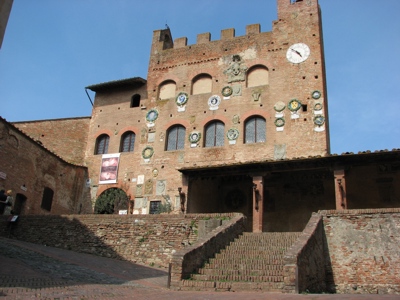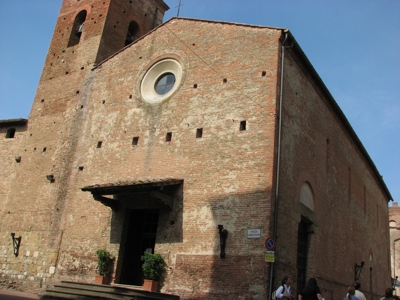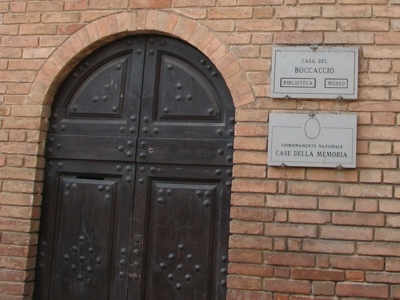| Palazzo Pretorio or Palazzo Vicariale |
 | |
The Palazzo of Vicari was originally property of the Albertis. Lately it became the seat of the Florentine Vicari, that is to say who was on behalf of the Florentine Republic. It is a typical Tuscan civic-castle, with a crenelled roof and a watch tower. Noteworthy are the dungeons, the gardens and the main hall which houses civic exhibitions. The walls embody different alt relieves representing coats of arms.
|
|
| St. Philip and Jacopo |
 | |
This is Tuscan Early Romanesque church with a simple facade featuring an oculus light. It houses Boccaccio's mortal remains and a memorial. It was part of a church complex which included a cloister and a monastery which are now lost.
|
|
| Boccaccio House |
 | |
Boccaccio is one of the most influent medieval Italian novelists. This is a reconstruction of the house where he was born because the original palazzo was destroyed during the II World War bombings. It houses a library and a study centre focused on the Boccaccio's works.
|
|
 Photo gallery of Certaldo: Tuscany Region (Toscana) - Italy. Images about: Palazzo Pretorio or Palazzo Vicariale, St. Philip and Jacopo, Boccaccio House
Photo gallery of Certaldo: Tuscany Region (Toscana) - Italy. Images about: Palazzo Pretorio or Palazzo Vicariale, St. Philip and Jacopo, Boccaccio House
